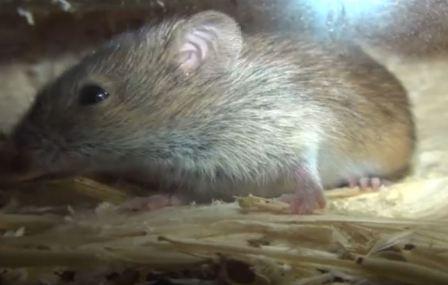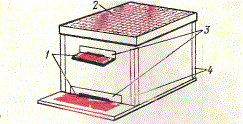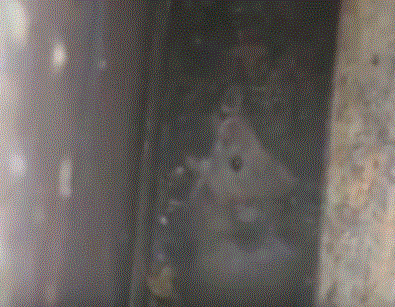How to get rid of a mouse in a hive and apiary - How to protect a hive and bees from mice

Mice in the apiary Mice are one of the most common enemies of bees, which cause great damage to bees during wintering.
Field, house and forest mice are most often found in apiaries. Having climbed into the hives in the fall, mice make their nests in the hives, eat honey and bees in the winter and cause great disturbance to the bees. A mouse entering a honeycomb storage facility will cause enormous damage to the apiary, damaging or destroying some of the honeycombs.
Bees do not complete honeycombs damaged by mice, and the queen bee does not lay eggs in honeycombs with a mouse odor. Mice chew on insulating material, damage the walls of hives. So mice and bees are enemies and it is necessary to protect the hives and bees from mice.
Protecting hives from mice
During wintering, mice cause a lot of trouble for bees. Mice gnaw through the hive entrance or walls of hives, especially in the corners, or climb into hives from above. The question arises: how to protect the hive from bees? Each beekeeper has his own secrets for fighting mice in the apiary.
Protecting hives from mice Here is one of the tips. You can put plate of window glass 2-4 mm thick on the alighting board . Before this, the glass is thoroughly washed. As a result, on a smooth and dry surface, the mice’s claws slip and cannot catch. The entrance holes are lined with thin aluminum sheets 0.4-0.5 mm thick. The cut parts of the sheet are folded inside the notch.
The corners of the hive are covered with iron corners made of the same aluminum sheet.

Protecting hives from mice
To prevent mice from entering the hive from above, a wooden frame with a fine-mesh metal mesh is made. The frame is tightly fitted around the perimeter of the hive.
The frame is made of 20*70 mm coniferous timber, the timbers are joined into a joint with nails. For rigidity, metal corners are nailed.
How to get rid of a mouse in a hive and apiary
How to get rid of a mouse in a hive and in an apiary In the fall, mice leave the fields and flood populated areas; mice do not bypass apiaries either.
Above, we have already discussed how to protect a bee colony from mice getting inside the hive.
Now let's see what to do with a mouse if it has already entered the hive and, in general, what to do with mice in the apiary. How to protect an apiary from mice? How to remove a mouse from a hive?
A mouse in the hive in winter is unacceptable, it will disturb the bees, and the bee colony may die in winter. In addition, the mouse will begin to build a nest in the hive and spoil the honeycombs, the bees also do not like the mouse smell, it will disturb the bees all winter and in the spring until the hive is replaced.
If a mouse gets into a hive, then there is only one way to fight it. There is no need to chase the mouse throughout the hive to disturb the bees. You can put a mousetrap on top of the frames and the mouse will simply be slammed down; at the next inspection, just throw away the mouse and that’s it, the mouse will fall into the mousetrap in literally another hour. After throwing away the swatted mouse, set the mousetrap again; mice often live in families, and there may be two or three of them in the hive. If some of the mice have escaped from the hive, don’t be fooled; they will soon return to the hive, so there is no need to remove the mousetrap.
You can scatter poisoned grain, but in this case, if you scatter the grain in the hive, there is a danger that it can cause toxicosis of the bees, because the poison tends to evaporate. Therefore, the poisoned grain must be placed under the hive.
In addition to these measures, you can put burdock, elderberry leaves or spruce branches on top of the hive frames; mice do not like the smell of elderberry and they do not like the pine needles.
In general, it is necessary to fight mice in the apiary. The simplest thing is to have 2 - 3 good cats in the apiary that can catch mice, and at the same time chase tits in the apiary, both in winter and in summer. It wouldn’t hurt to periodically let the cat into the room storage combs so that he could chase mice there. Or introduce hedgehogs to the apiary. A hedgehog in an apiary at night will not only be a good mouse catcher, but will also be good at collecting all the dead or sick crawling bees in the apiary, which will contribute to cleanliness in the apiary and the non-spread of infections among bees. Hedgehogs generally catch snakes, lizards, frogs and other unwanted guests in apiaries. The only thing that needs to be provided is high stands for the hives so that hedgehogs do not collect bees from the alighting board in the evenings. If it is not possible to have cats, you can simply scatter poisoned grain to kill mice and rats in the apiary. The grain is scattered either under the beehives or under a piece of slate laid on bricks.

